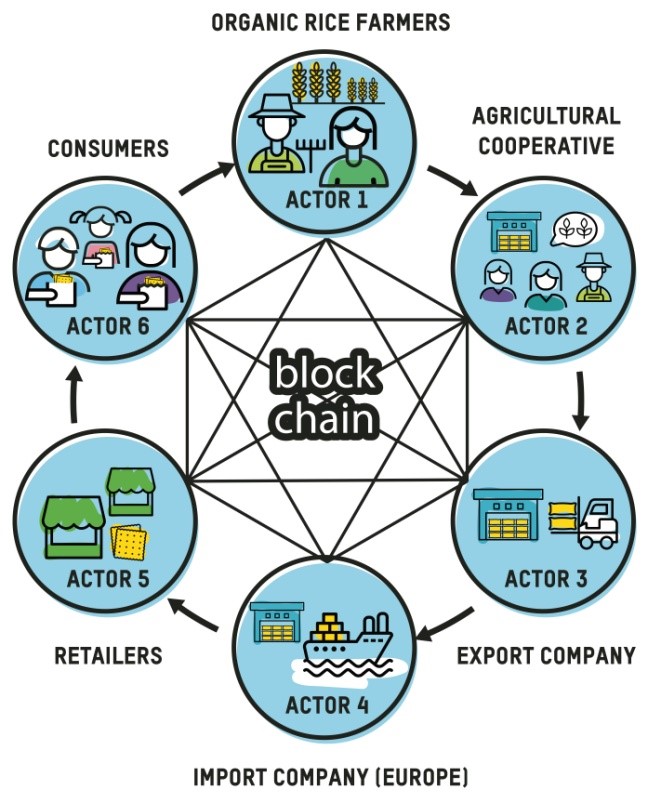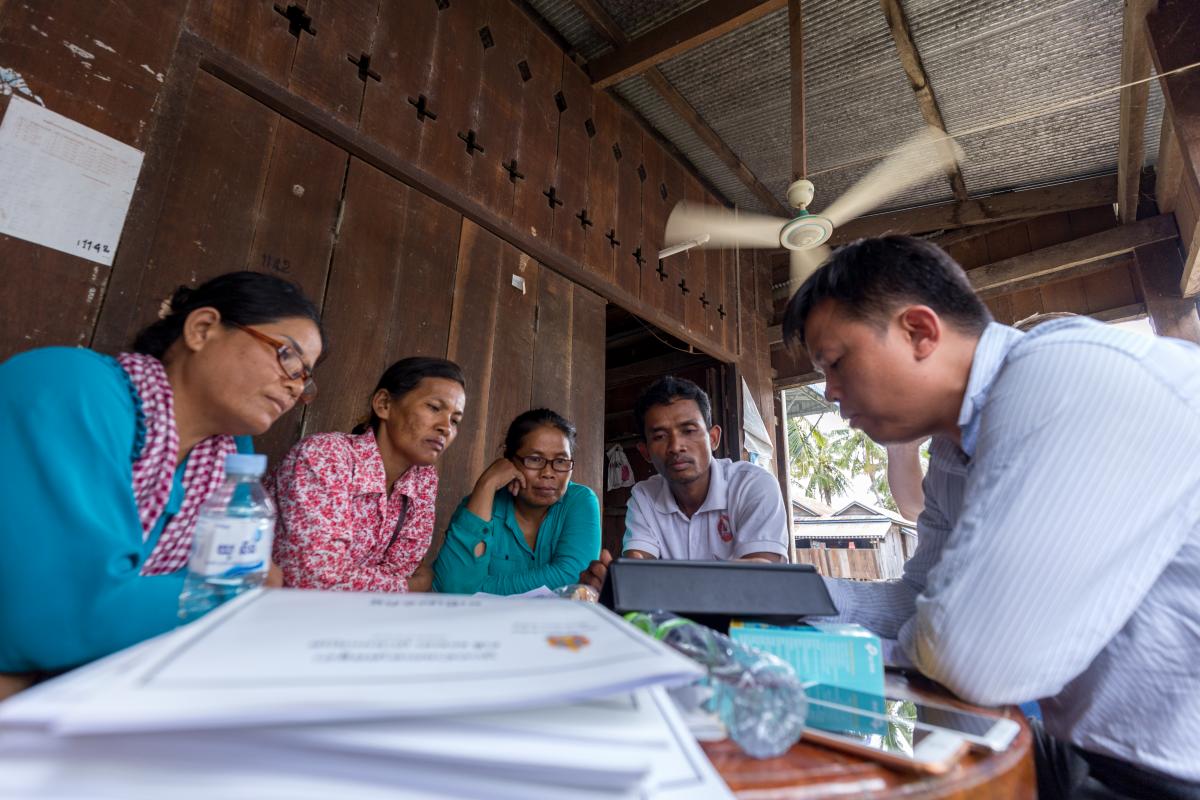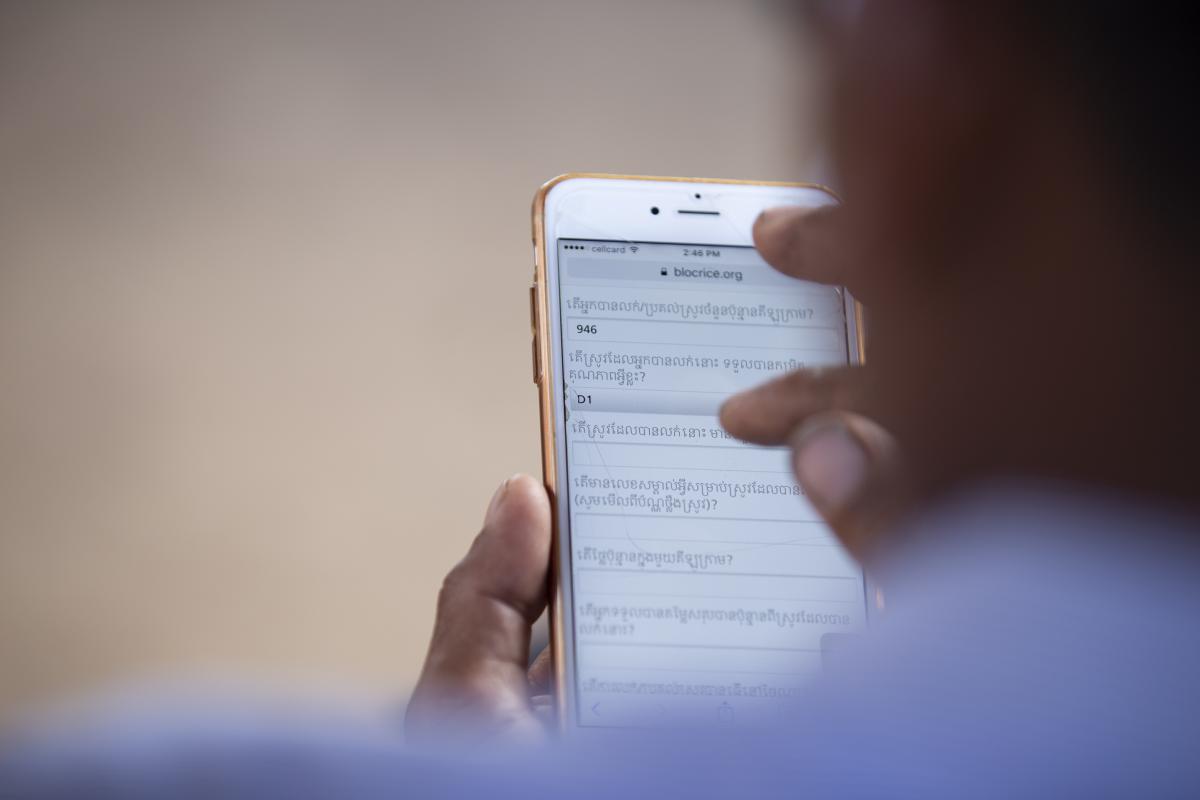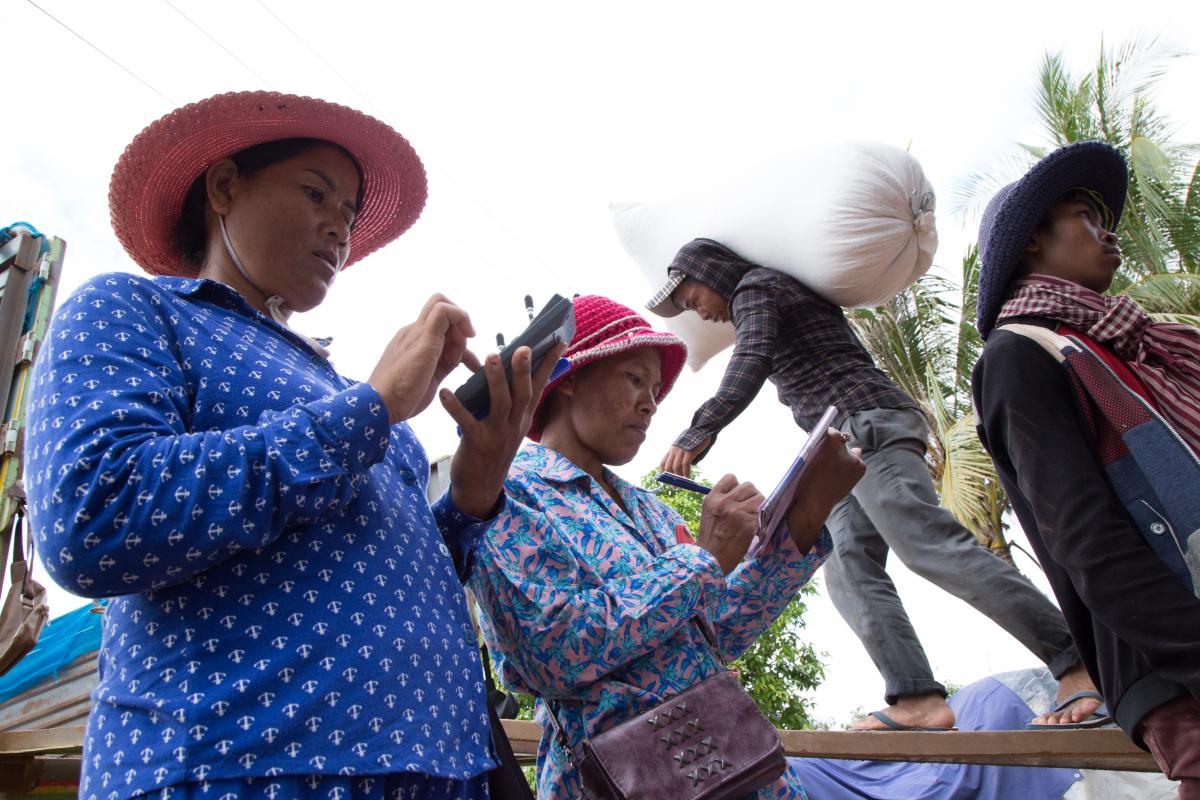CAMBODIAN rice farmers are using blockchain technology to get better prices for their organic rice – a step that brings them closer to achieving fair trade for their produce.
In this venture, UK-based iNGO Oxfam delivered the technology and acted as facilitator to connect relevant players in the rice supply chain including the organic rice farmers, agricultural cooperatives, exporters, importers and retailers, to ensure transparency along the entire network.
“Working with these farmers and helping them build and improve their lives is the core of our work for many years,” said Phay Cheth, Oxfam’s BlocRice Project Manager. “We see the opportunity of using blockchain technology to monitor the social condition around the supply chain of their organic rice. We decided to test it with rice first because it is one of Cambodia’s main commodity.”

(Photo: Oxfam)
BlocRice, short for Blockchain for Livelihoods from Organic Cambodian Rice, was a pilot project with small-scale rice farmers in Preah Vihear, a province located in the central north of Cambodia.
Preah Vihear is known for organic rice. Farmers there own an average of 1 to 2 hectares of land and produce an average of 2.5 to 3 tons per year.
Around 50 farmers from the organic rice cooperative Reaksmey Lekkompos Kaksekor partnered with Oxfam to negotiate a contract with rice exporter AMRU Rice. Eliminating the middlemen, AMRU sells the rice to Netherlands-based Sano Rice, which will then produce the rice crackers to be sold in retail outlets in Europe.
“Because we want to avoid any complexities, we decided to choose only one cooperative with 50 farmers for this testing,” Cheth said.

Phay Cheth (far right), Programme Coordinator, Oxfam Cambodia trained an agriculture cooperative committee in Preah Vihear province on how to use BlocRice application (Photo: Oxfam)
For BlocRice, Oxfam had outlined three key focus areas:
- To introduce blockchain technology to the organic rice value chain by registering all chain actors with unique identification codes on blockchain
- To introduce a smart contract between farmers, their agricultural cooperative, exporting companies and manufacturing company to ensure proper payments and transparency
- To design a consumer communication component from the Cambodian countryside to the retailer
“Smart” contract farming
According to Oxfam, their goal is to promote a “smart” contract which is a three-way digital contract farming agreement between the organic farmers, rice exporters and buyers in the Netherlands. With the arrangement, farmers gain collective bargaining power because their cooperative is part of the contract.
“Contract farming is one of the conditions where we use the blockchain to verify whether all the terms mentioned in the agreement are being met such as purchase price, trade volume, transportation method, among other provisions,” Cheth said.
BlocRice, through an application (app), allows the farmers to see key information about their supply chain and electronically verify if their contract conditions are being met.
Oxfam explained that “the web-based application focuses on transparency and traceability and enables all parties to digitally facilitate, verify and enforce the negotiation and performance of a contract. All stakeholders involved can access information on the supply chain in their shared database, from planting up to the manufacture of rice products.”
Cashless payment
BlocRice has introduced cashless payments to the farmers. Issuing payments through the farmer’s individual account enables electronic verification of payment by the buyer to a farmer. The blockchain is updated every time a cashless payment is made.
“We let them know that blockchain is cashless. They already know how the bank system works today compared to 10 years ago. It’s better now since most of them have bank loans so they have bank accounts,” said Cheth. “We don’t force them to open a bank account but we encourage them to open one since they can receive their payments through their accounts.”
According to Oxfam, BlocRice farmers received about US$ 0.24 per kilo with an additional U$$ 0.05 premium. “The premium worked out nearly US$100 for most of the BlocRice farmers, who each produced an average of just a bit less than two tons of white rice.”

BlocRice, through an app, allows the farmers to see key information about their supply chain and electronically verify if their contract conditions are being met. (Photo: Oxfam)
Value for consumers
With BlocRice, consumers can also trace the end product. They will know if the farmers have been paid correctly for their rice.
Oxfam said that “the consumers are enabled to make an informed and conscious choice for rice that complies with social conditions and fair production standards.”
Challenges and lessons learned
But rolling out the programme had its fair share of challenges.
“Of the 50 participants, only 38 farmers decided to sell their paddy rice to the cooperative because of the drought that occurred during the third quarter of 2018. Some farmers decided to keep rice for their family consumption rather than sell, thus affecting the contract,” said Cheth.
Cheth added that out of the 38 farmers only 32 elected to receive payment through the bank, as the rest still preferred to receive in cash. But for the cooperative’s perspective they are happy about it because it greatly reduced their risk as they carry less cash when they pay the farmers.
Literacy was a big concern as well. “There are some data elements in the BlocRice app that every individual farmer needs to confirm and to click. Some farmers can’t read or write and we learned this issue halfway through the programme,” Cheth said. “So when we refine the application we will consider putting in more visuals or even audio and to automate some things to make sure it’s easy for them, and if possible they need to type only numbers.”
Moreover, access to the BlocRice application became an issue because only few farmers owned smart phones.
“Out of the 50 farmers only about 30% have smart phones and mostly these are of the low-end kind,” Cheth said. Oxfam invested in quality smart phones for the cooperative where farmers can use the phones to register or to complete their data.
“With the use of 3G technology and smart phones, farmers need to top up and sometimes they don’t have the means to do so. Sometimes I bring my router and have it topped up. I gather the farmers so that they can use their phones,” Cheth said.
Cheth explained that BlocRice being web-based for now gives them the flexibility to adjust until all fixes in the application are addressed. The next step will be the launch of a mobile app. “We expect that in the future, it will become a mobile app so farmers can update their data even if they are offline, and then simply push out the date once they are online.”

Farmers record the number of paddy rice bags before transporting to the company’s warehouse. (Photo: Oxfam)
“We expect to bring traceability, transparency, financial literacy and best practices to contract farming in Cambodia,” said Kann Kunthy, managing director of Phnom Penh-based rice exporter AMRU Rice, in a separate interview with Nikkei Asian Review.
“Promoting fair trade could improve the image of Cambodian rice and help expand exports, especially to Western markets. Foreign retailers will be able to access the BlocRice system to trace where the rice comes from and to monitor whether their trading partners are treating local farmers fairly,” added Kunthy in the interview.
According to studies, exports of Cambodian rice are on the rise for the last 20 years because of the preferential tariff exemption from the European Union under the Everything But Arms scheme. In 2017, of the 600,000 tons shipped abroad, about 50% went to the EU.
“BlocRice has worked well and there is a very good potential for scale up to thousands of farmers. Cashew nuts, black pepper and cassava can be the next agricultural commodities to apply blockchain technology,” Cheth said.
Nike Kevin Durant
 iConnectHub
iConnectHub
 Login/Register
Login/Register Supplier Login
Supplier Login



























